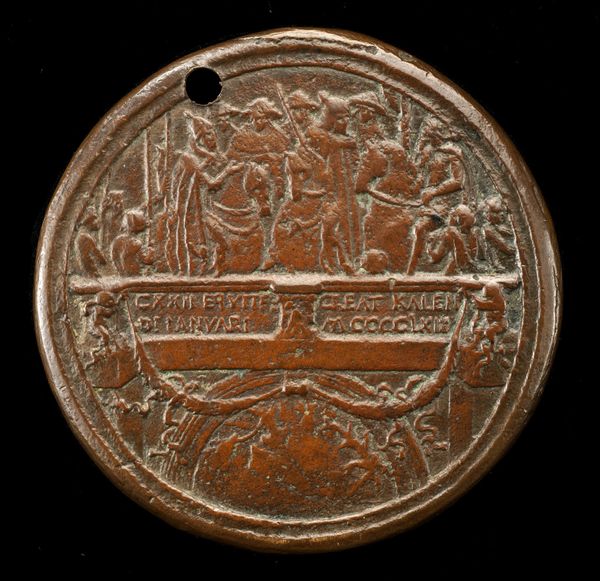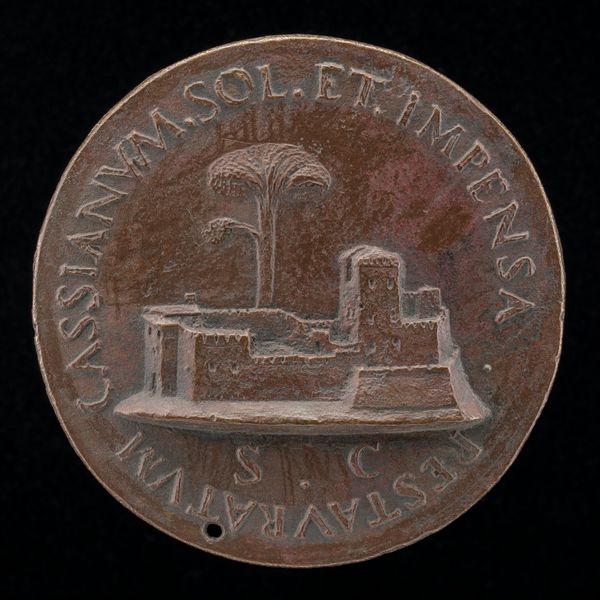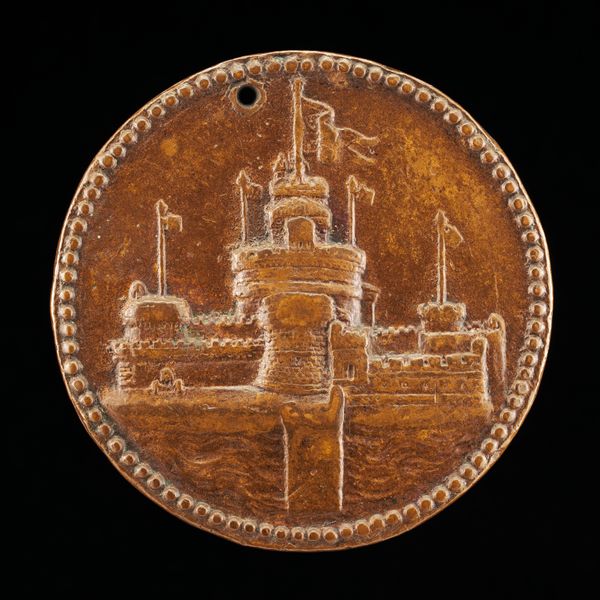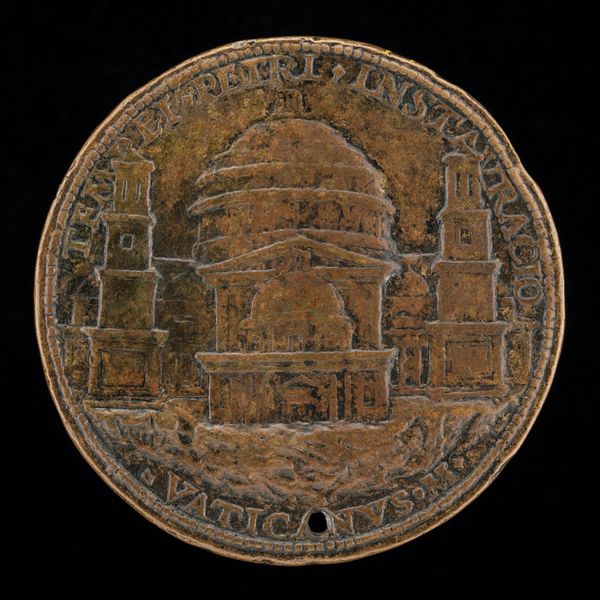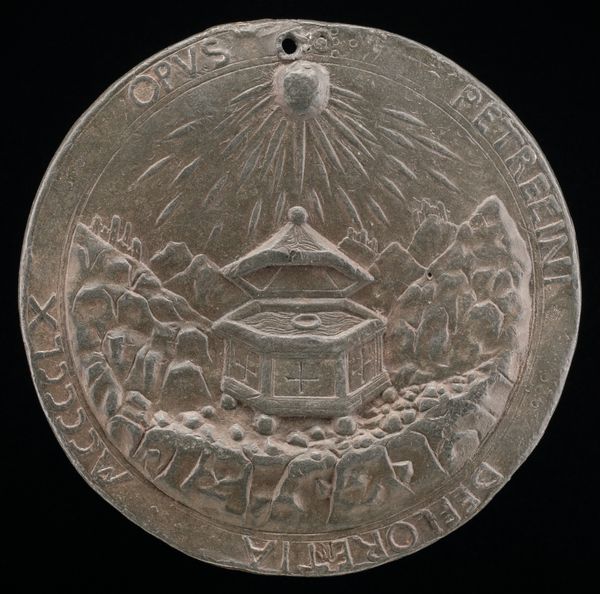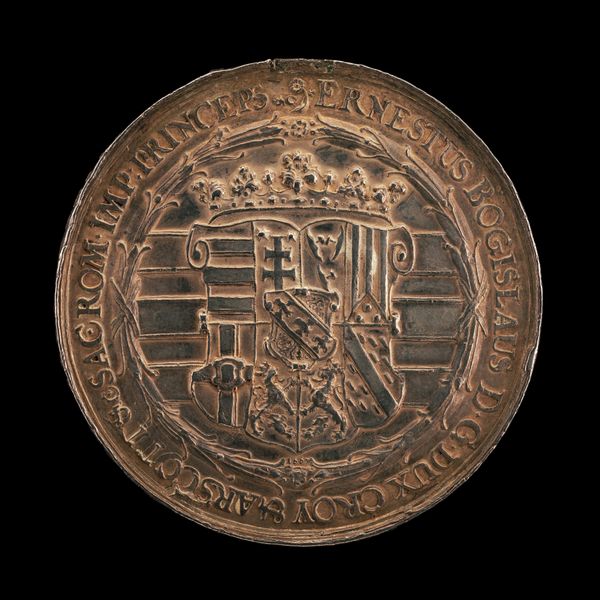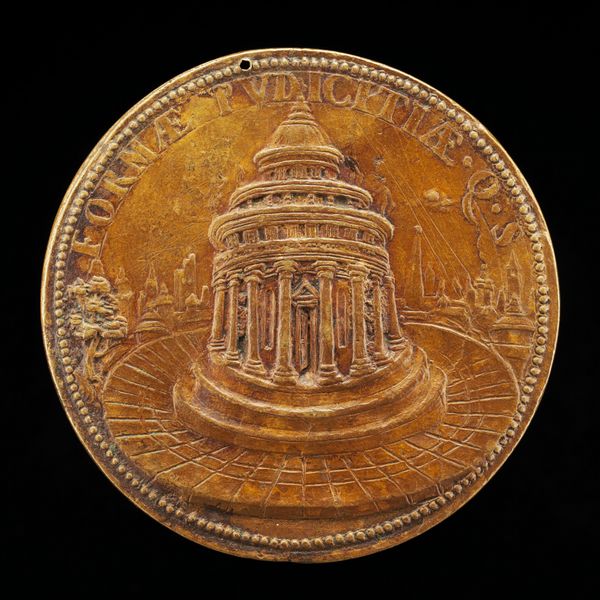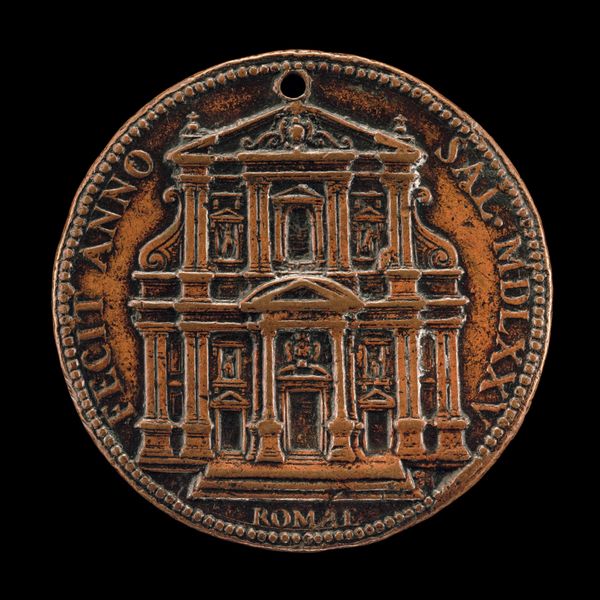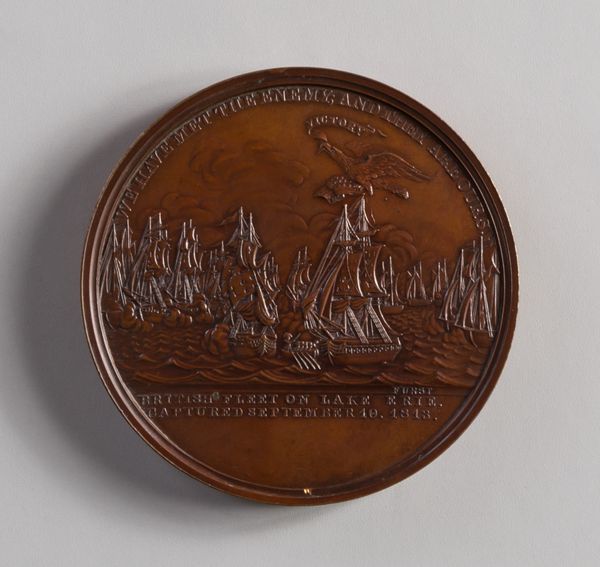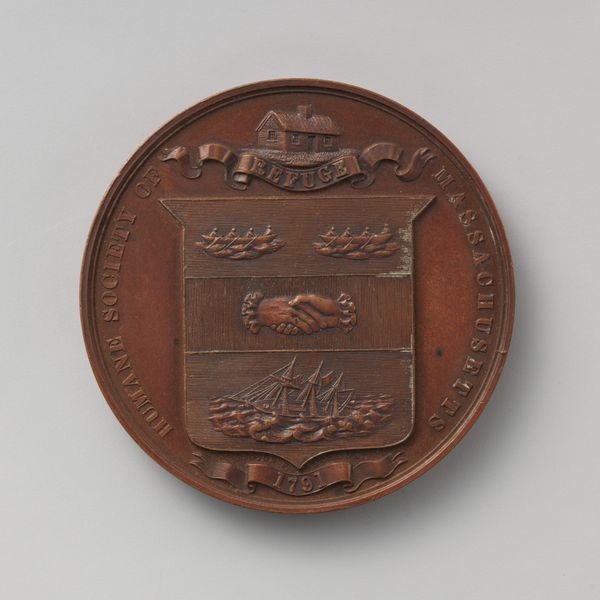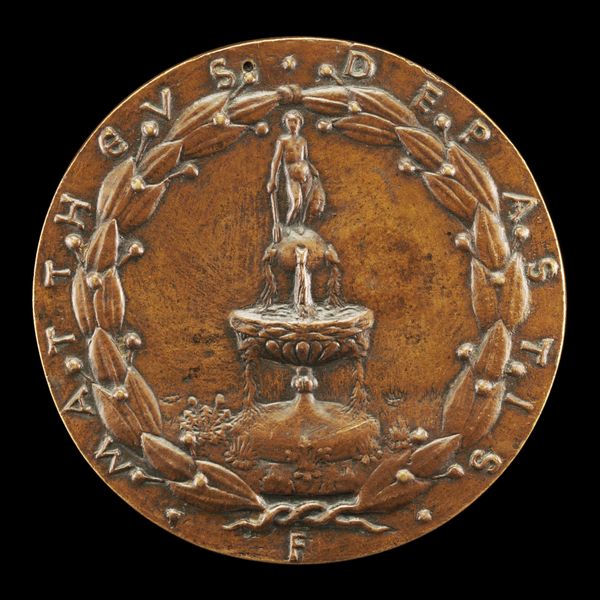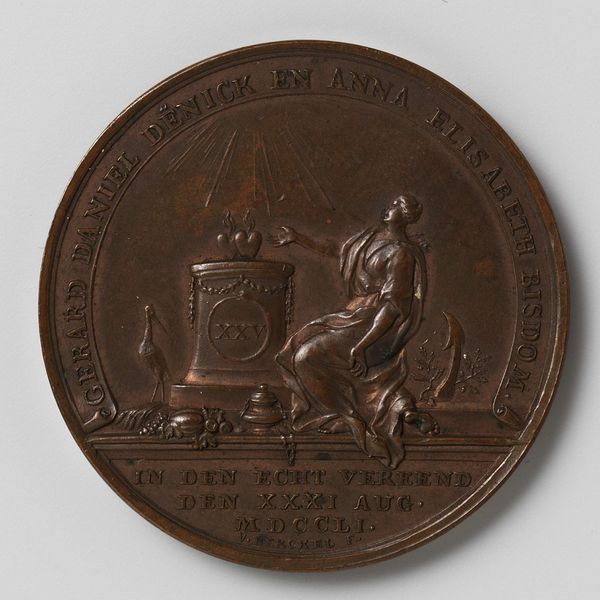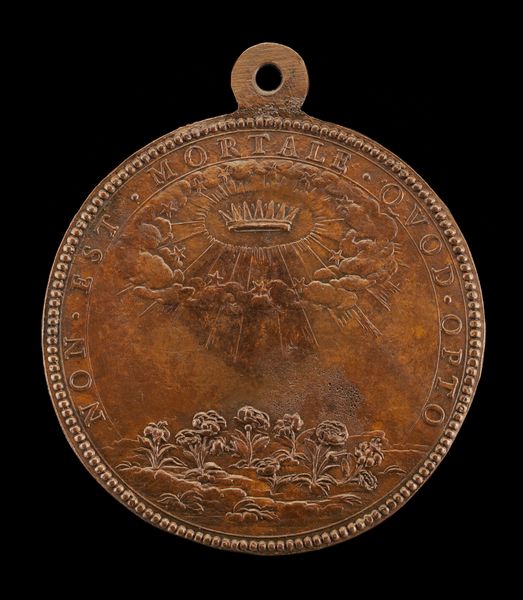![Citadel of Piacenza [reverse] by Giovan Federico Bonzagni](/_next/image?url=https%3A%2F%2Fd2w8kbdekdi1gv.cloudfront.net%2FeyJidWNrZXQiOiAiYXJ0ZXJhLWltYWdlcy1idWNrZXQiLCAia2V5IjogImFydHdvcmtzLzQzM2VlNmNmLTllZTgtNGJiYy1iMjUyLTY4NGViMWQ1OGE5YS80MzNlZTZjZi05ZWU4LTRiYmMtYjI1Mi02ODRlYjFkNThhOWFfZnVsbC5qcGciLCAiZWRpdHMiOiB7InJlc2l6ZSI6IHsid2lkdGgiOiAxOTIwLCAiaGVpZ2h0IjogMTkyMCwgImZpdCI6ICJpbnNpZGUifX19&w=3840&q=75)
carving, metal, relief, sculpture
#
portrait
#
medal
#
natural stone pattern
#
carving
#
metal
#
stone
#
sculpture
#
detailed texture
#
relief
#
unrealistic statue
#
carved into stone
#
sculpture
#
carved
#
golden font
#
italian-renaissance
#
columned text
#
statue
Dimensions: overall (diameter): 4.03 cm (1 9/16 in.) gross weight: 48.65 gr (0.107 lb.) axis: 6:00
Copyright: National Gallery of Art: CC0 1.0
Curator: This is the reverse side of Giovan Federico Bonzagni's medal, "Citadel of Piacenza," made around 1547. It's a Renaissance carving in metal relief. Editor: My first thought is the sense of enclosed space. That architecture seems deliberately fortified, weighty even on such a small scale. Curator: Precisely. The medal format was often used to convey power and status. Bonzagni likely designed this to celebrate the citadel’s importance. Think of Piacenza’s strategic position during the Italian Wars. This wasn't just architecture; it was a symbol of military strength, projecting power within a turbulent political landscape. Editor: The composition certainly reinforces that idea. See how the architectonics are sharply defined. The textures imply density and durability. I’m interested in the visual language being deployed here to suggest stability. Curator: And let’s not overlook the inscription surrounding the citadel. The text itself functions as both declaration and boundary. The very act of naming, of inscription, is part of establishing dominance. Consider the impact on viewers—intended to feel both awe and perhaps a degree of caution when encountering this emblem of civic might. Editor: An interesting detail: notice the almost stylized depiction of water at the base of the fortress. It adds another layer of meaning. It evokes fluidity, yet it is contained, much like the city itself is contained by its fortifications. The formal contrast enhances the impression of inviolability. Curator: Absolutely. What this medal encapsulates isn't simply a portrait of a building but a claim of sovereignty, embedded within a network of competing city-states and empires. It's a material assertion of authority. Editor: Considering the craftsmanship alongside its symbolism gives us a richer understanding. Curator: Agreed, focusing on that interplay is key.
Comments
No comments
Be the first to comment and join the conversation on the ultimate creative platform.
